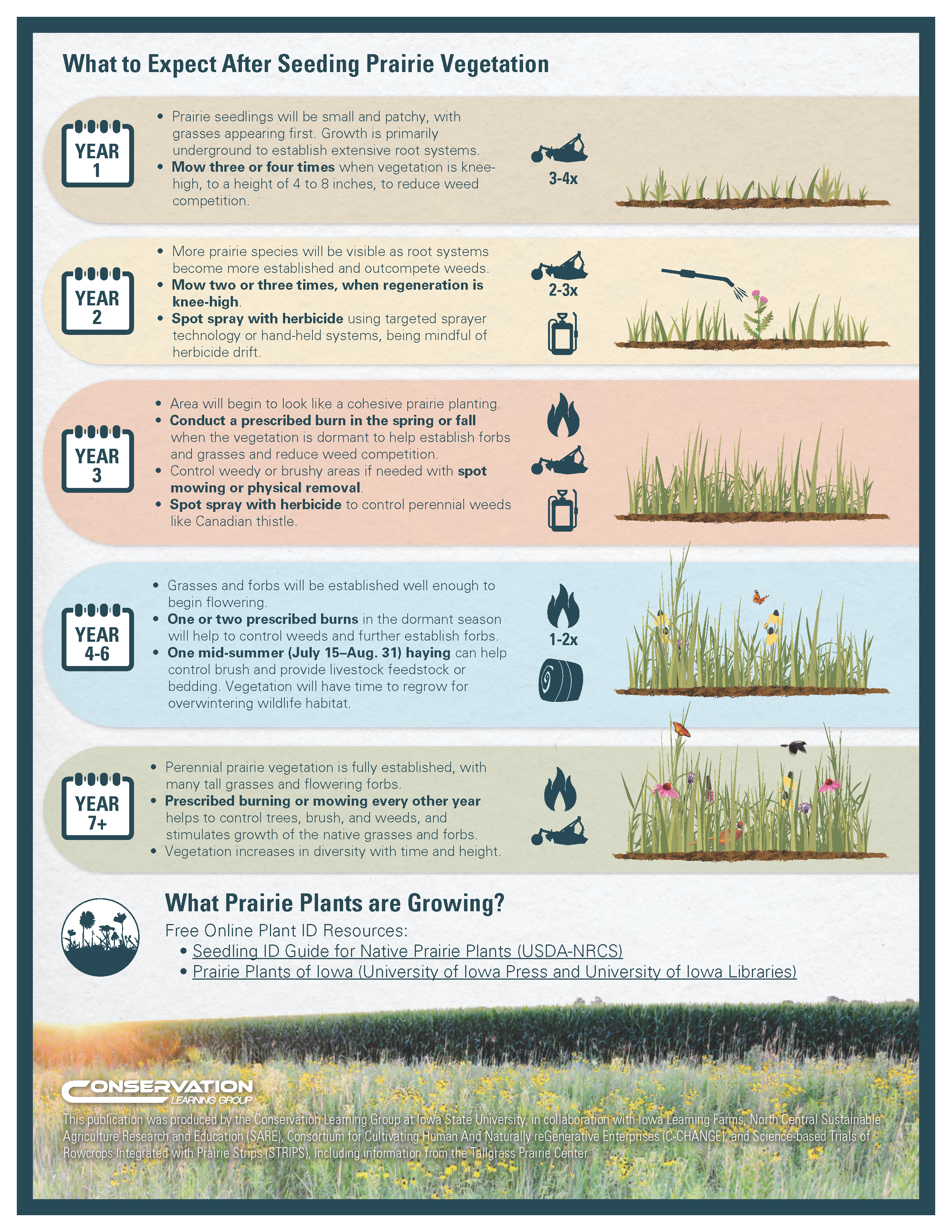How to Re-establish Native Flowers and Prairie Lands in Your Lawn
- by
- Gene Caballero
- June 09, 2022
Look pollinators are a crucial part of the ecosystem, but they have fewer and fewer places to eat as urbanization expands. One great way to help pollinators stay afloat is to “re-wild” some portion of your lawn to allow native plants and animals to move back in.
Even dedicating a small portion of your lawn to re-wilding can make a huge difference. This infographic lays out a 7-year plan to establish native plant species in your lawn.
What is the first step to re-establishing native plant species in my lawn?
The first step to establishing prairie lands is to prepare the soil, next you will want to seed the area with native flowers and grasses. During the first phase of reestablishing the prairie land, most of the growth will be beneath the soil. You will want to mow the lot 3 or 4 times in the first year.
How do I maintain a developing prairie land?
It’s simple, according to this infographic you will want to fight back against the invasive species of plants that try to advance in. During the second year, you will mow 2 or 3 times when the plants get to be knee-high and spot treat the space with an herbicide.
During the 3rd year the infographic calls for a prescribed burn in the spring or fall while the plants are dormant, spot treatments with herbicide, and spot mowing.
In years four through six, you will want to conduct prescribed burns and spread hay in the area to prevent weeds and provide bedding for animals and livestock.
Why should I let native plants grow on my property?
Growing native plants provides a habitat for native wildlife. Not only mammals but also birds and native pollinators. This can be a great way to help protect native plant and animal species. Further if done right, it will also provide year-round flowers and a low maintenance patch of land you will only have to tend to once or twice a year.
This infographic is from the Conservation Learning Group. Check out our lawn care blog for more great information on caring for your lawns and gardens.
Powered by Froala Editor











